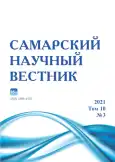Modeling the ecological niche and features of coprobiontic fungi distribution in Asia by the example of Cyathus stercoreus
- Authors: Vlasenko V.A.1, Turmunkh D.2, Nazyn C.D.3, Vlasenko A.V.1
-
Affiliations:
- Central Siberian Botanical Garden of Siberian Branch of the Russian Academy of Sciences
- Plant Protection Research Institute of Mongolia
- Tuvan State University
- Issue: Vol 10, No 3 (2021)
- Pages: 41-46
- Section: General Biology
- URL: https://journals.rcsi.science/2309-4370/article/view/90464
- DOI: https://doi.org/10.17816/snv2021103105
- ID: 90464
Cite item
Full Text
Abstract
Species distribution is undergoing rapid changes in the face of habitat modification and climate change. This leads to concerns about the conservation of declining species and raises ecological questions about the processes that govern species ranges and niches. As a consequence, the predictive distribution models which match species records to patterns in abiotic environmental variables have become an established tool in ecology and conservation. Maximum entropy spatial distribution modelling (MaxEnt) solves this problem by inferring species distributions and environmental tolerance based on the occurrence data. The objectives of this research were the ecological niche and running the habitat suitability modelling on dung fungal species Cyathus stercoreus based on its bioclimatic and substrate features within Asia. We constructed a map of the current geographical distribution of the dung fungus Cyathus stercoreus using MaxEnt method. We included in the model 19 WorldClim bioclimatic variables with the corresponding altitude data, and seven spatially well-dispersed species occurrence records. Despite its narrow substrate specialization, Cyathus stercoreus is climatically quite plastic and is able to develop in a wide range of variations in mean annual temperatures and mean annual precipitation, which follows from the analysis of a two-dimensional niche based on two climatic variables using the Envelope method. Modeling the distribution of basidiomycete dung fungi using the Cyathus stercoreus as an example showed that the area of their potential distribution with a zone of favorable climate is very large. Most of the zone with a favorable climate is located in the area with the probability of the presence of species up to 70%. Cyathus stercoreus is not associated with any particular habitat type. On the territory of Russia, in the south of Siberia, the species is located on the northern border of its range in the area with the least favorable bioclimatic environmental factors.
Full Text
##article.viewOnOriginalSite##About the authors
Vyacheslav Aleksandrovich Vlasenko
Central Siberian Botanical Garden of Siberian Branch of the Russian Academy of Sciences
Author for correspondence.
Email: vlasenkomyces@mail.ru
candidate of biological sciences, senior researcher of Mycology, Algology and Lichenology Laboratory
Russian FederationDejidmaa Turmunkh
Plant Protection Research Institute of Mongolia
Email: dejidmaa.chag@gmail.com
PhD, senior researcher of Plant Pathology Laboratory
MongoliaChechekmaa Dembirelovna Nazyn
Tuvan State University
Email: nazynch@mail.ru
candidate of biological sciences, associate professor of Biology and Ecology Department
Russian FederationAnastasia Vladimirovna Vlasenko
Central Siberian Botanical Garden of Siberian Branch of the Russian Academy of Sciences
Email: anastasiamix81@mail.ru
candidate of biological sciences, head of Mycology, Algology and Lichenology Laboratory
Russian FederationReferences
- Warren D.L., Seifert S.N. Ecological niche modeling in MaxEnt: the importance of model complexity and the performance of model selection criteria // Ecological Applications. 2011. Vol. 21, № 2. P. 335–342.
- Wright R.N., Westerhoff D.V. New Forest SAC Management Plan. Lyndhurst: English Nature, 2001. 15 p.
- Hepinstall J.A. et al. Effects of niche width on the performance and agreement of avian habitat models // Scott J.M. et al (eds.). Washington: Island Press, 2002. P. 593–606.
- Brotons L., Thuiller W., Araújo M.B., Hirzel A.H. Presence-absence versus presence-only modelling methods for predicting bird habitat suitability // Ecography. 2004. Vol. 27. P. 437–448.
- Hernandez P.A., Graham C.H., Master L.L., Albert D.L. The effect of sample size and species characteristics on performance of different species distribution modeling methods // Ecography. 2006. Vol. 29, № 5. P. 773–785.
- Tsoar A., Allouche O., Steinitz O., Rotem D., Kadmon R. A comparative evaluation of presenceonly methods for modelling species distribution // Diversity and distributions. 2007. Vol. 13, № 4. P. 397–405.
- Gaston K.J., Fuller R.A. Biodiversity and extinction: losing the common and the widespread // Progress in Physical Geography. 2007. Vol. 31. P. 213–225.
- Zurell D., Franklin J., König C., Bouchet P.J., Dormann C.F., Elith J., Fandos G., Feng X., Guillera-Arroita G., Guisan A., Lahoz-Monfort J.J., Leitão P.J., Park D.S., Townsend Peterson A., Rapacciuolo G., Schmatz D.R., Schröder B., Serra-Diaz J.M., Thuiller W., Yates K.L., Zimmermann N.E., Merow C. A standard protocol for reporting species distribution models // Ecography. 2020. Vol. 43, № 9. P. 1261–1277.
- Phillips S.J., Dudík M. Modeling of species distributions with MaxEnt: new extensions and a comprehensive evaluation // Ecography. 2008. Vol. 190. P. 231–259.
- Phillips S.J., Anderson R.P., Schapired R.E. Maximum entropy modeling of species geographic distributions // Ecological Modelling. 2006. Vol. 190. P. 231–259.
- GBIF. 2021 [Internet]. – https://www.gbif.org.
- Fernandez A., Sanchez S., Garcıa P., Sanchez J. Macrofungal diversity in an isolated and fragmented Mediterranean forest ecosystem // Plant Biosystems. 2020. Vol. 154, № 2. P. 139–148.
- Krug J.C., Benny G.L., Keller H.W. Coprophilous fungi // Biodiversity of fungi: inventory and monitoring methods / eds. Mueller G.M., Bills G.F., Foster M.S. Burlington (MA): Elsevier Academic Press, 2004. P. 467–501.
- Hijmans R.J., Guarino L., Mathur P. DIVA-GIS Version 7.5. 2012 [Internet]. – http://diva-gis.org/docs/DIVA-GIS_manual_7.pdf.
- Hijmans R.J., Cameron S.E., Parra J.L., Jones P.G., Jarvis A. Very high resolution interpolated climate surfaces for global land areas // International Journal of Climatology. 2005. Vol. 25. P. 1965–1978.
- Scheldeman X., Van Zonneveld M. Training manual on spatial analysis of plant diversity and distribution. Rome: Biodiversity International, 2010. 179 p.
Supplementary files











